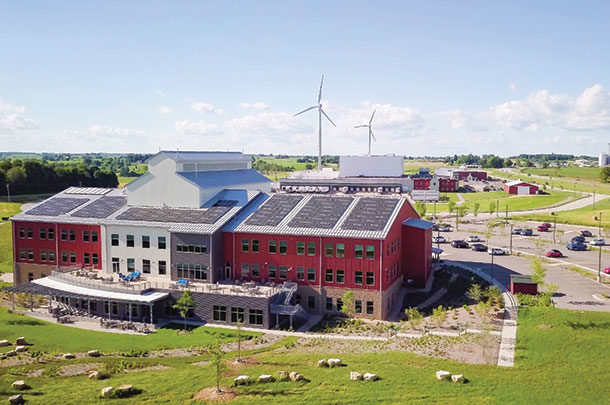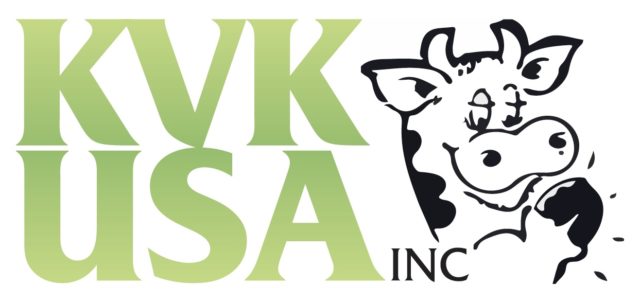Organic Valley is America’s largest cooperative of organic farmers, with nearly 1,800 farmers in 34 U.S. states, Canada, Australia and the United Kingdom.
Headquartered in Wisconsin, the cooperative is aiming to become the first major dairy brand to achieve carbon-neutral farm emissions without relying on carbon offsets.
Progressive Dairy Editor Karen Lee spoke with Nicole Rakobitsch, director of sustainability at Organic Valley to learn more about the cooperative’s plans to accomplish its goals.
 Nicole Rakobitsch
Nicole Rakobitsch
Director of Sustainability
Organic Valley
What are Organic Valley’s sustainability goals?
Rakobitsch: Our main goal is a climate goal, and it is to be carbon neutral by the year 2050. We have two interim targets, the first one being a 15% reduction from our baseline by the year 2030.
To set that goal, we had a farmer climate committee we presented various pieces of data to. We did a comprehensive greenhouse gas accounting of our whole cooperative, from farm to retail. As part of that, we did a life cycle assessment specific to our dairy farms with the University of Wisconsin – Madison. With that, we were able to set our baseline in 2019 and then determine how we are going to get to carbon neutral.
Climate is the main goal. When you look at climate, many other things come with it, like water quality benefits, biodiversity, soil health, etc.
How have your farmer-members contributed to these efforts?
Rakobitsch: There have been clean energy projects, so renewable energy and energy efficiency. There have been some improved manure management projects, as well as agroforestry – specifically, the planting of trees in pasture, riparian buffer plantings and compost application.
Our farms’ pasture almost double the organic standard requirements, so there’s greater carbon sequestration benefit. Organic farms plant cover crops, they do crop rotation, and there also are requirements for biodiversity.
Just a baseline of an organic farm, there’s already many practices that benefit the climate. What we’re doing with our goal and our carbon insetting program is scaling that up even further.
What have you done at the corporate level to be more sustainable?
Rakobitsch: About 90% of our footprint does happen at the farm level, but then we have our facilities that we own and co-own, and our third-party facilities. The facilities we own and co-own are all powered with 100% renewable electricity.
Even before that, our office building in Cashton was LEED Gold certified. That building is 100% heated and cooled with geothermal energy, which I think is pretty neat.
As far as renewable electricity goes, every one of our buildings has solar on it, we have three commercial-sized solar farms that we sponsor, the wind farm in Cashton, and our two office buildings have electric vehicle charging stations, native plantings and native prairies.
What programs have you started to further reduce emissions?
Rakobitsch: The main initiative is at the farm level. It’s a carbon insetting program that is part of our Climate-Smart Farming program. It’s a way to incentivize our farmers to do more climate-smart farming practices. Essentially, we are paying our farmers per ton of carbon either reduced or sequestered by implementation of a climate-smart farming practice – many of the ones I mentioned earlier. By doing that, we will retain that carbon reduction or removal with the farm and with our cooperative and be able to take that carbon reduction to lower our carbon footprint.
It is an alternative to a company that might purchase an external carbon credit from a project outside their supply chain. That’s not what we’re doing. We’re doing a carbon inset within our supply chain by investing in our farmer-members and practices they do on-farm, and creating the infrastructure around that to monitor the carbon over time so we can verify the carbon that’s sequestered and use that dataset to validate our carbon reduction and removal claims. That credit will stay with the farm and with us so [our farmer-members] will be able to talk about the good things they’re doing and how they’re lowering their footprint.
 The cooperative’s carbon insetting and renewable energy loan programs are helping its farmer-members adopt renewable energy practices like solar installations to achieve the long-term goal of carbon neutral by 2050. Photo courtesy of Organic Valley.
The cooperative’s carbon insetting and renewable energy loan programs are helping its farmer-members adopt renewable energy practices like solar installations to achieve the long-term goal of carbon neutral by 2050. Photo courtesy of Organic Valley.How are you introducing the carbon insetting program?
Rakobitsch: We’re in our pilot year. We just launched this, and our goal is to enroll 30 to 50 farmers this year. As we scale up, we plan to enroll more farmers every year. Interested farmers can contact the co-op.
We’re also phasing in the practices that we offer in the carbon insetting program. We’re developing the internal protocol we’re going to follow, and that takes a little bit of time.
This year we’re focusing on renewable energy, energy efficiency, manure management, agroforestry and compost application. Next year, we’ll be adding on grazing enhancements, as well as feed supplements and cropping practices, such as reduced tillage and multispecies cover cropping.
What else do you hope to accomplish through the carbon insetting program?
Rakobitsch: We’re measuring biodiversity, especially with some of these nature-based practices like agroforestry. We’re really interested to see any benefits to biodiversity that might come along with that. Then we’ll also be quantifying the water quality benefit. So just a couple of those key co-benefits that come along with carbon.
You also offer a renewable energy loan program to help finance some of these projects. Can you tell me more about that?
Rakobitsch: It’s a low interest rate, long-term loan that’s backed by the co-op, but it’s through the Clean Energy Credit Union. The idea is that with the longer term, you can essentially replace your electric bill with a loan payment and be able to install solar without increasing your monthly costs.
That was launched last year, and we’ve had a handful of projects to start. They’re not all installed yet because some are still waiting to hear back on grants from the USDA REAP program. We actually help our farmers apply for these grants to help them get additional funds for renewable energy projects.
Solar is the one that’s most popular with our farmers, but other renewable energy is eligible. Energy efficiency improvements are also eligible practices under the loan.






